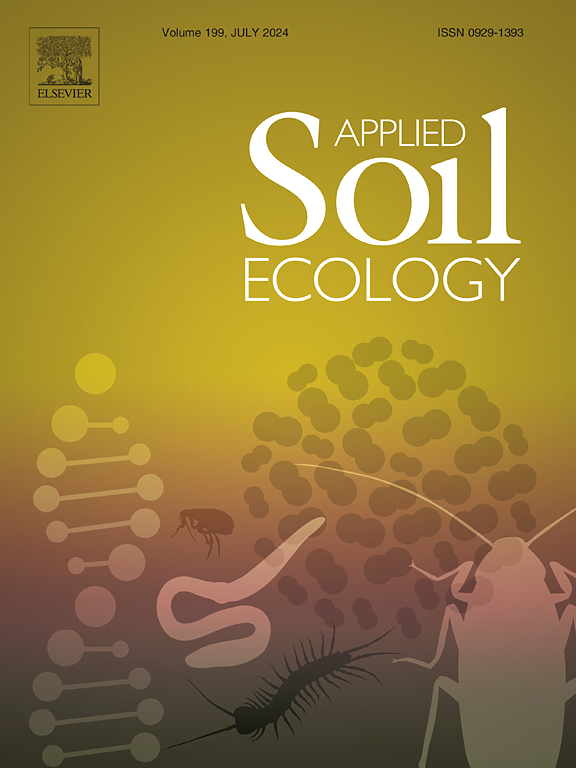土地利用强度对耕地土壤微生物功能群落的不同影响
IF 4.8
2区 农林科学
Q1 SOIL SCIENCE
引用次数: 0
摘要
土地利用的集约化会影响土壤微生物群落及其功能潜力。然而,在农业生态系统中,土地利用集约化的不同方面对土壤微生物功能群的影响仍未得到充分阐明。这项研究调查了荷兰多种农业耕作方式相结合、土地利用强度(LUI)呈梯度变化的耕地中的土壤微生物群落及其功能潜力。结果显示,土壤细菌和真菌功能群沿着土地利用强度梯度发生了变化,土地利用强度与许多真菌功能群的多样性之间存在很强的负相关关系。LUI 的变化也导致细菌和真菌功能群落的组成发生显著变化。具体来说,灌溉和病虫害防治被认为是影响土壤微生物功能群落组合的主要措施。我们进一步发现,在较高的 LUI 条件下,土壤真菌功能群落之间的连通性降低。总之,我们的研究结果表明,降低土地利用强度可能会对土壤微生物群落的功能潜力产生积极影响,尤其是对土壤真菌而言。可持续管理实践,尤其是与灌溉和病虫害防治相关的实践,可能会减轻一些观察到的不利影响。本文章由计算机程序翻译,如有差异,请以英文原文为准。
Land use intensity differently affects soil microbial functional communities in arable fields
Land use intensification can influence soil microbial communities and their functional potential. However, the impacts of different aspects of land use intensification on functional groups of soil microbes remain insufficiently elucidated in agroecosystems. This study investigated soil microbial groups and their functional potential in arable fields embedded in a gradient of land use intensity (LUI), integrating multiple agricultural practices in the Netherlands. The results reveal changes in soil bacterial and fungal functional groups along the LUI gradient, with a strong negative relationship between LUI and the diversity of many fungal functional groups. Changes in LUI also led to significant changes in the composition of both bacterial and fungal functional communities. Specifically, irrigation and pest control were identified as the primary practices influencing the community assembly of soil microbial functional groups. We further show that the connectivity between soil fungal functional groups decreased under higher LUI. In summary, our findings demonstrate that reducing land use intensity may have positive impacts on the functional potential of soil microbial communities, particularly for soil fungi. Sustainable management practices particularly related to irrigation and pest control may alleviate some of the observed adverse effects.
求助全文
通过发布文献求助,成功后即可免费获取论文全文。
去求助
来源期刊

Applied Soil Ecology
农林科学-土壤科学
CiteScore
9.70
自引率
4.20%
发文量
363
审稿时长
5.3 months
期刊介绍:
Applied Soil Ecology addresses the role of soil organisms and their interactions in relation to: sustainability and productivity, nutrient cycling and other soil processes, the maintenance of soil functions, the impact of human activities on soil ecosystems and bio(techno)logical control of soil-inhabiting pests, diseases and weeds.
 求助内容:
求助内容: 应助结果提醒方式:
应助结果提醒方式:


